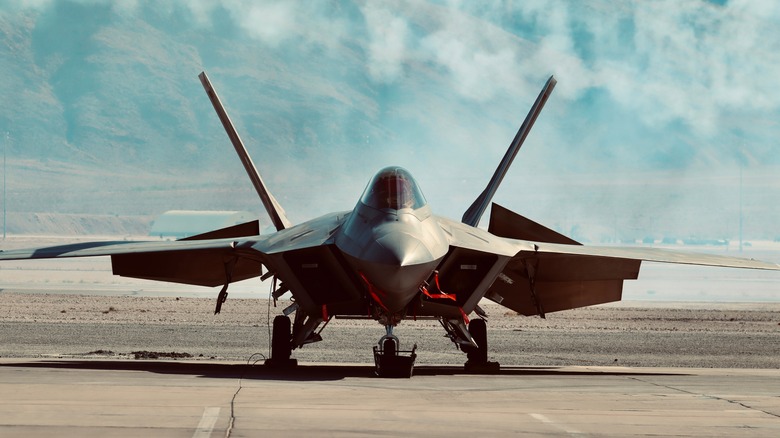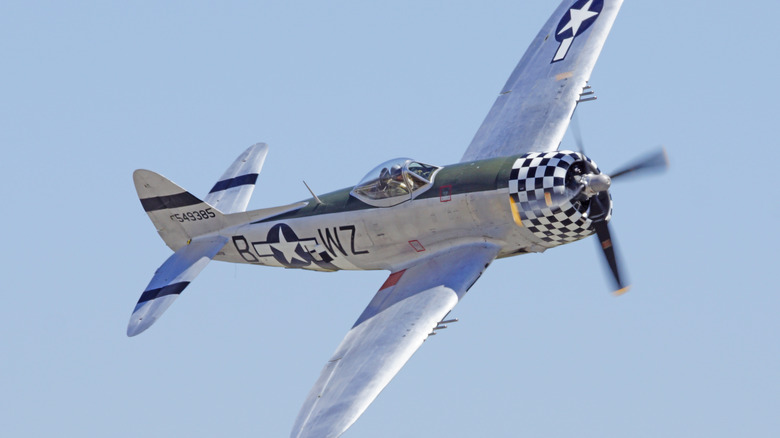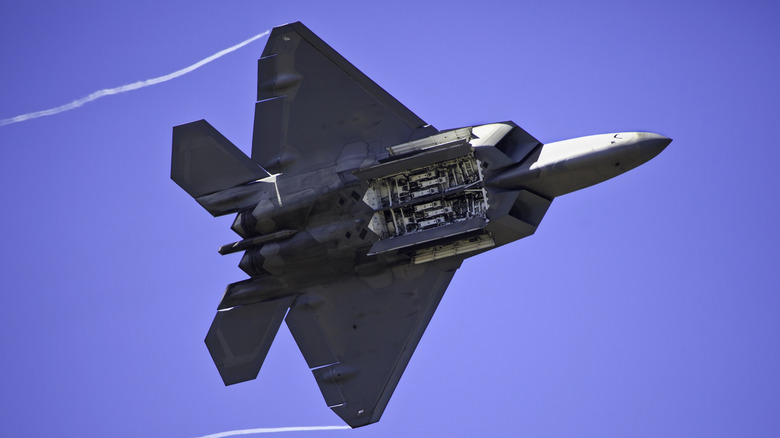Here's How The Sixth-Gen F-47 Fighter Jet Got Its Name
In March 2025, the U.S. government announced it will be working on the next generation of fighter jet to join its illustrious military ranks: the F-47. The country already owns a few jets counted among the most advanced and fastest fighter jets known to man — think the F-35 Lightning II and the F-22 Raptor, respectively. However, that doesn't mean innovation and daring technological advancements should cease. The F-35 and F-22 are known to serve different yet defined roles in combat, which could suggest that the F-47 will have its own specialized role in the field. Currently, little information is available about the sixth-generation fighter jet, including where and by whom it will be built. However, we now know how it got its name.
On March 21, 2025, President Trump revealed details of the Next Generation Air Dominance (NGAD) initiative, with one of the key announcements being the F-47. In his statement (via C-SPAN), the president named the fighter jet and revealed that "the generals picked the title," and that "it is a beautiful number." Since President Trump is the 47th president of the U.S., some believed that the aircraft's name was in his honor. While that may be partly true, since the jet's name reflects the president's support for the program, the F-47 was also named after the P-47 Thunderbolt, a famous World War II fighter plane known to many military pilots of its era as the "Juggernaut."
The P-47 saw action in every theater of war during World War II
The P-47 was a fighter and fighter-bomber craft employed by the Allies during World War II. It was powered by a single 2,000-horsepower Pratt & Whitney R-2800 radial engine and measured 36 feet 2 inches in length and 14 feet 8 inches in height, with a wingspan of 40 feet 9 inches. As an aircraft meant to go against some of the Axis's best planes, the P-47 featured six to eight .50 caliber machine guns and either 10 rockets or 2,500 pounds of bombs. Its top speed was a respectable 433 miles per hour, while its cruising speed was 350 miles per hour.
What truly made the P-47 stand out was its success rate. It saw action in every theater of war during World War II, destroying a significant number of enemy equipment: 68,000 trucks, 6,000 armored fighting vehicles, 86,000 railway cars, 9,000 locomotives, and 4,000 enemy planes. By the culmination of the war, over 15,500 P-47s had been built. With such achievements, it should come as no shock that the military saw fit to honor it by naming the F-47 after it.
The F-47 doesn't follow the usual naming conventions
However, it should be noted that, although the P-47 is truly an iconic fighter and naming the F-47 after it feels fitting, the circumstances surrounding the naming process itself are somewhat murky. First, it is no secret that the F-47's name does not adhere to the established rules found within the "Mission Design Series" protocol, which typically governs the naming of aircraft in the military.
Emails show officials scrambling to tie a suitable narrative to the chosen "47" identifier, which doesn't paint a flattering picture for the F-47 or the military. Only hours after the F-47 was announced, U.S. Air Force General David Allvin shared in an X post that the number "honors the legacy of the P-47" while also paying "tribute to the founding year" of the U.S. Air Force. The F-47 is slated to replace the F-22 Raptor, which is scheduled for retirement in the 2030s.
Lockheed Martin, which has been heavily involved with both the F-35 and F-22's development, and Boeing, which, despite being known for its commercial airliners, has some impressive military aircraft in its catalog, went head to head for the F-47's contract, even building X-planes meant to demonstrate what they could bring to the table if they won the contract. After several test flights, with the first taking place in 2019, Boeing emerged as the winner.


